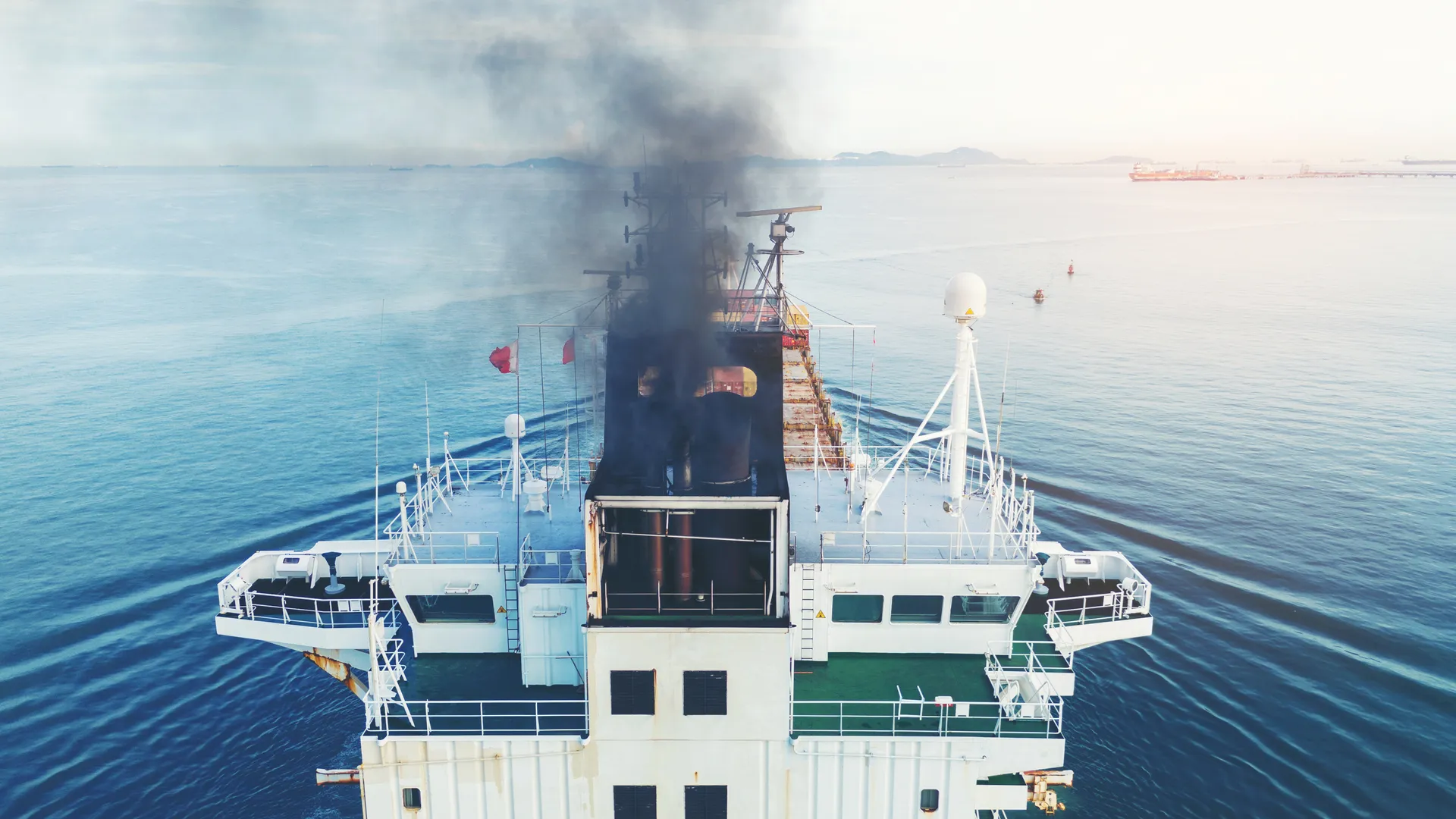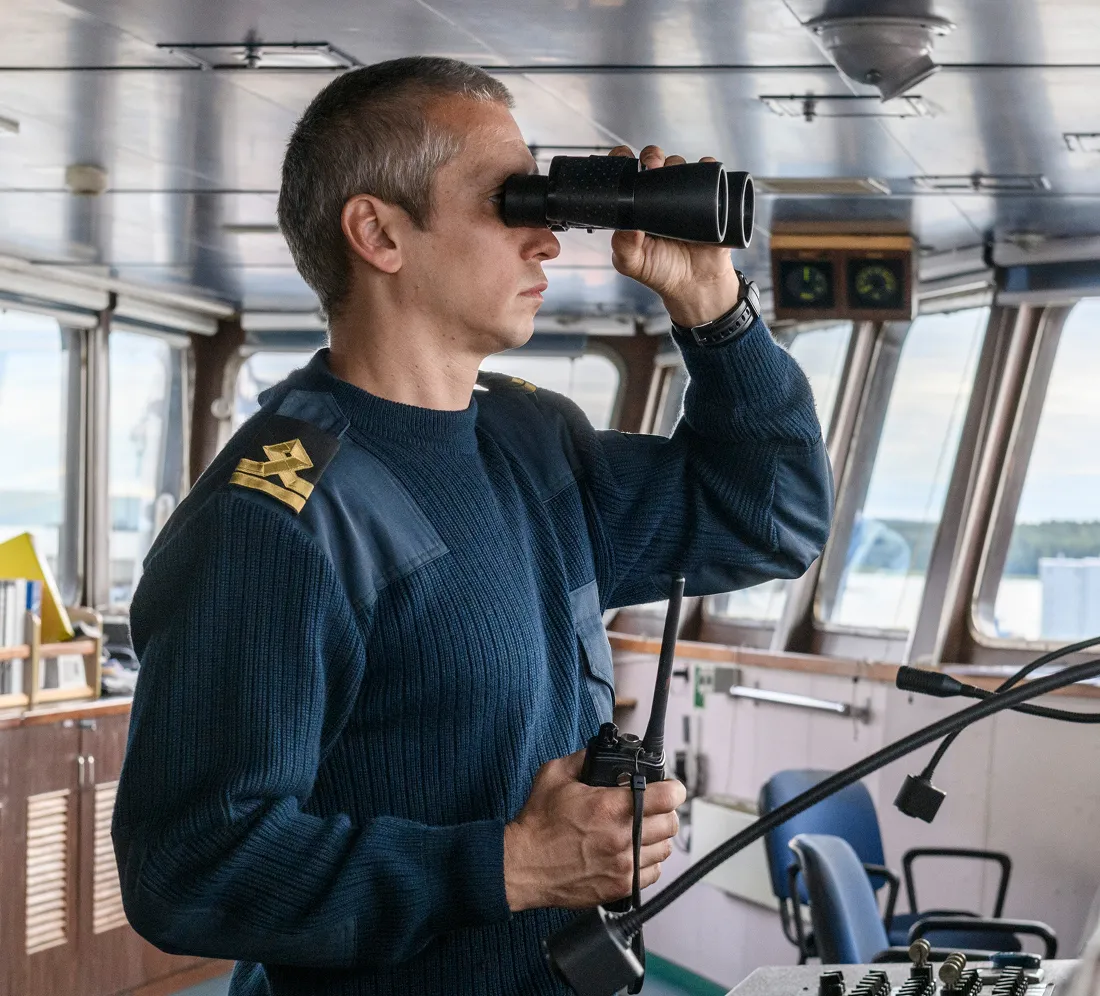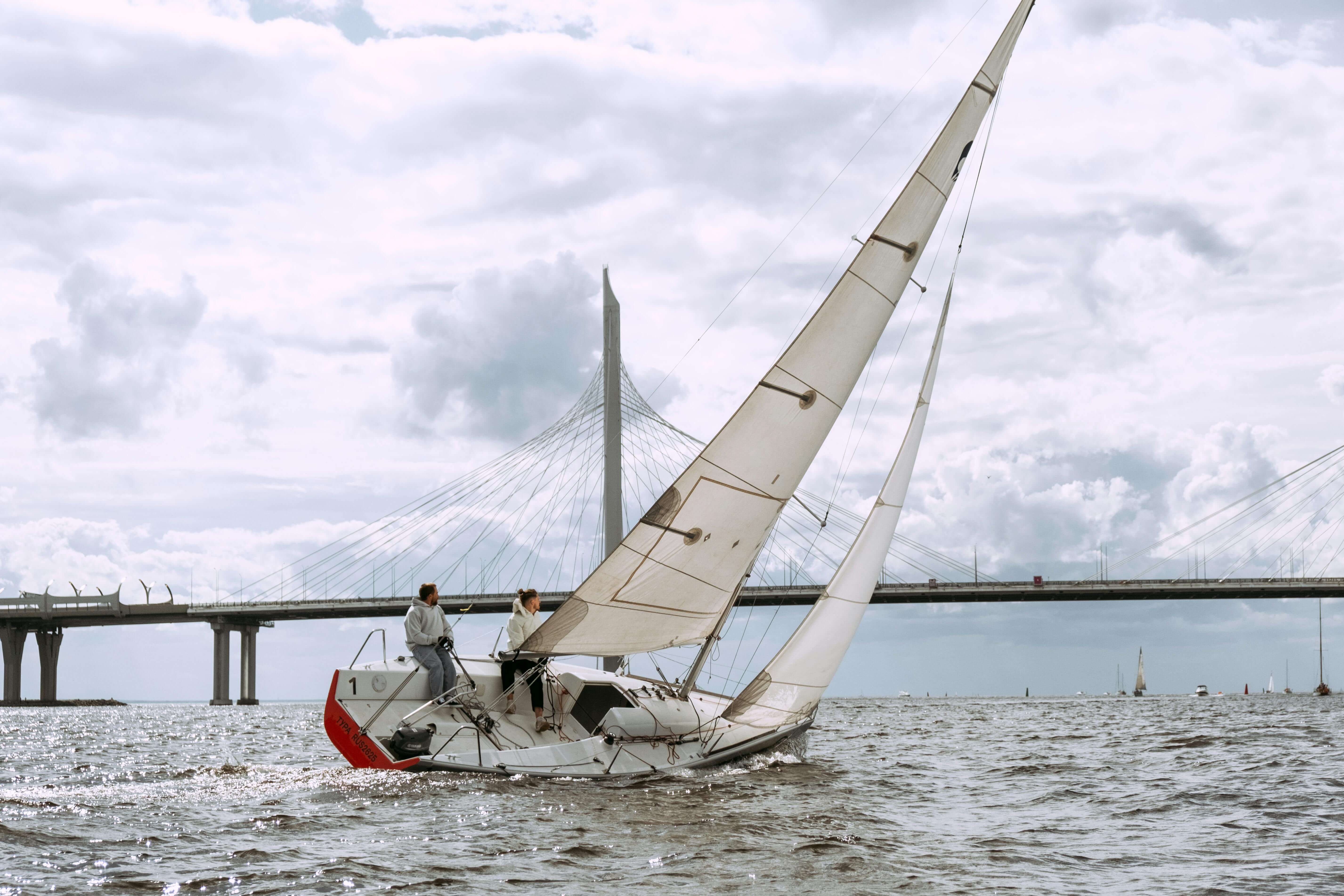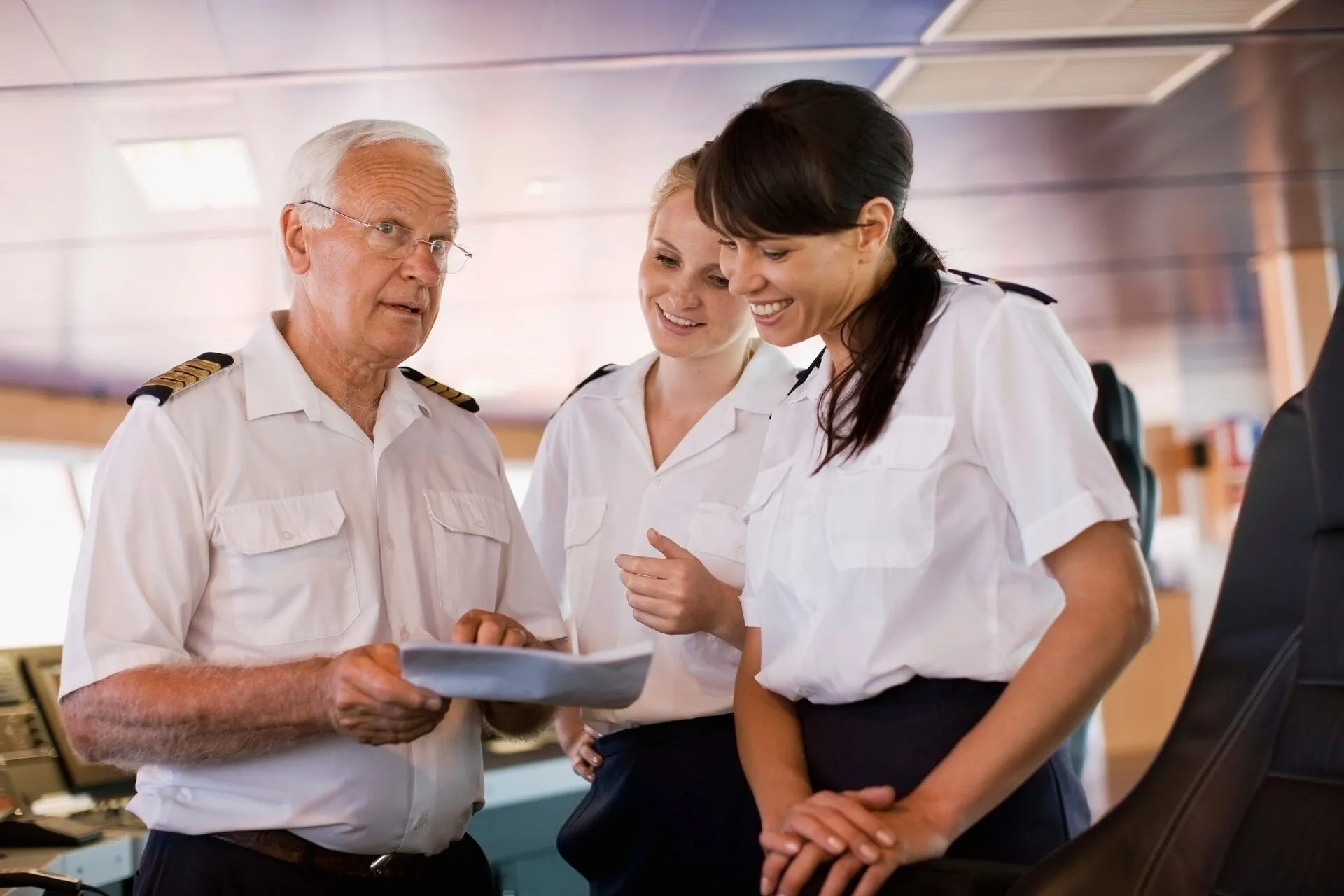A Captain’s Guide to Safely Handle Fire on Boats
Fires at sea are rare but extremely dangerous. When you’re far from help, knowing how to act quickly can save lives. This guide covers the key steps to prevent and handle boat fires safely.

Boat fires may be rare, but they are one of the most dangerous emergencies you can face at sea. Unlike on land, you can’t just wait for the fire department. Out on the water, you're the first responder.
Whether you're docked, anchored, or underway, how you respond in those first seconds can mean the difference between a contained incident and a full-blown disaster.
Captains and crew need to take fire safety seriously. That’s why we’ve created this guide on how to safely handle fire on boats.
We’ll cover everything you need to know, from how fires start and how to respond fast to how to keep them from happening in the first place.
What To Do When There’s Fire on The Boat
If you suspect or discover a fire on your boat, act quickly and calmly. Follow these steps to stay safe and respond effectively:
- Detect and locate the fire. Use smoke or carbon monoxide alarms and visually check to confirm where the fire is and what’s burning.
- Sound the alarm and alert everyone calmly so crew and passengers know there’s a fire before you take any action.
- Stop the boat and shut off power and fuel. Slowing and stopping the boat prevents flames from fanning and smoke from spreading. Cutting power and fuel helps contain the fire.
- Identify the fire source and type to determine the best way to fight it safely.
- Use the appropriate fire extinguisher following the PASS method: Pull the pin, Aim at the base, Squeeze, and Sweep side to side.
- Close doors, hatches, or ventilation to starve the fire of oxygen if fire type allows it.
- Call for help via radio or emergency signaling if you cannot control the fire quickly.
- Prepare to evacuate if the fire grows or smoke becomes overwhelming.
Types of Boat Fires
Knowing what kind of fire you're dealing with helps you react the right way, without making it worse. Here’s a quick breakdown of the most common fire classes you’ll encounter on a boat:
Class A: Ordinary Combustibles
These fires involve solid materials like wood, paper, fabric, and trash. They're common in cabins, lockers, or storage areas.
🧯Use: Water or an ABC dry chemical extinguisher.
Class B: Flammable Liquids
Caused by gasoline, diesel, oil, grease, or alcohol. These fires typically occur in engine rooms, galleys, or near fuel systems.
🧯Use: A BC or ABC extinguisher, a fire blanket, or baking soda (for small grease fires).
🔥Do not use: Water can spread the liquid and intensify the fire.
Class C: Electrical Fires
These involve energized wiring, batteries, or electronics, like panels and power systems.
🧯Use: A C-rated or ABC extinguisher. Once power is cut off, treat it as a Class A fire.
🔥Do not use: Water can shock you or spread the fire.
Class D: Combustible Metals
Rare, but possible. These fires involve burning magnesium, lithium (like from batteries), or other metals.
🧯Use a Class D agent only.
🔥Do not use: Water or standard extinguishers, as they can react dangerously.
How To Safely Handle Boat Fires
Training and preparation are essential to respond effectively when fire strikes on board. Knowing the right equipment, tactics, and crew roles can make all the difference.
Have the Right Equipment
Having the proper fire-fighting tools on board is critical. Make sure your boat is equipped with and regularly maintains:
- ABC dry chemical extinguishers, which are effective on most types of fires you might encounter.
- Fire blankets for safely smothering small grease fires, especially in the galley.
- Fixed suppression systems installed in engine compartments that can automatically control fires before they spread.
- Engine-room fire ports that allow you to access and fight engine fires without opening hatches, which could feed oxygen and worsen the blaze.
Control the Environment
Alongside having the right gear, controlling the fire’s environment is crucial to preventing its spread. This means limiting oxygen and managing airflow carefully:
- Close doors, hatches, and ventilation to starve the fire of air, but only if the fire type allows. Never seal off electrical fires until power is completely shut off to avoid trapping energized wiring.
- Position the boat and adjust ventilation to ensure wind does not push flames or smoke toward crew or passengers.
- Avoid using water on flammable liquid (Class B) or electrical (Class C) fires, as it can spread the fire or cause electric shock.
Follow Effective Tactics
Effective fire response is about teamwork, clear communication, and knowing when to act – or step back.
- Assign clear roles for crew members before an emergency happens. Everyone should know who alerts others, who fights the fire, who manages communications, and who prepares for evacuation.
- When using a fire extinguisher, remember the PASS method: Pull the pin, Aim low at the fire’s base, Squeeze firmly, and Sweep side to side until the flames are out.
- For small grease fires, use a fire blanket or baking soda (not water) to safely smother flames.
- If fighting the fire becomes unsafe or smoke thickens, evacuate immediately. Your safety and the safety of your crew always come first.
- Always call for help as soon as possible, even if you think the fire is contained.
- After the incident, conduct a crew debrief to review what worked and improve readiness for next time.
Follow Emergency Communication Protocols
Effective communication during a boat fire can save lives and speed up rescue efforts.
1. Use the VHF Radio First
- Turn on your VHF marine radio and switch to Channel 16, the international distress frequency.
- Clearly state: “Mayday, Mayday, Mayday.”
- Provide your boat’s name, position (latitude and longitude or nearby landmarks), nature of the emergency (fire onboard), and number of people aboard.
- Repeat the message slowly and clearly until you receive a response.
2. Activate Emergency Position-Indicating Radio Beacon (EPIRB)
- If available, activate your EPIRB immediately. This device transmits your location to search and rescue satellites automatically.
- Make sure your EPIRB registration is up to date for quick identification.
3. Use Flares and Visual Signals
- Deploy orange smoke or red flares to attract attention visually, especially if radio contact is lost or not possible.
- Use a flashlight or signaling mirror to communicate with nearby vessels or aircraft.
5. Follow Up
- Once help is on the way, keep your radio on and listen for instructions.
- Provide updates on the fire status and crew condition as needed.
6. Have a Backup Plan
- Carry a handheld VHF radio or satellite phone as a secondary communication tool.
- Ensure all crew members know how to operate communication devices.
When and How To Evacuate
Knowing when and how to evacuate is critical for safety during a boat fire. Evacuation should never be delayed if the fire grows beyond control or if smoke endangers breathing.
When To Evacuate
- Fire grows rapidly or spreads beyond your ability to control it.
- Smoke becomes thick, toxic, or limits visibility inside the boat.
- Fire blocks your planned escape route.
- Structural damage or heat makes staying onboard unsafe.
- You cannot contain the fire with available equipment or crew.
- Emergency services advise immediate evacuation.
How To Evacuate
- Alert everyone on board immediately. Use the boat’s alarm system or shout clear instructions.
- Put on Personal Flotation Devices (PFDs) before leaving the cabin or enclosed areas. Ensure everyone is wearing one properly. If immersion suits are available, put them on or ensure they are accessible and ready for use.
- Grab emergency supplies if time allows: VHF radio, flares, emergency position-indicating radio beacon (EPIRB), and the boat’s grab bag with essentials.
- Head to the designated muster station or lifeboat/life raft area quickly and calmly. Avoid rushing or pushing to prevent injuries.
- Launch the life raft or use Personal Flotation Devices (PFDs) if abandoning ship. Follow manufacturer instructions or your onboard emergency plan.
- Keep together and account for all crew and passengers. Perform a headcount once in the water or raft.
- Use emergency signaling devices (flares, radio calls, EPIRB) to alert rescuers.
- Stay upwind and clear of the boat if it’s still burning or sinking.
Common Causes of Fire on Boats
Understanding what commonly causes fires on boats helps you prevent them before they even have a chance to start. Here are the most frequent sources of boat fires:
Fuel Leaks and Spills
Gasoline, diesel, and other flammable liquids are common on boats and pose a significant fire risk. Leaks from fuel lines, tanks, or connections can easily ignite if exposed to sparks or heat.
Electrical Problems
Faulty wiring, corroded connections, overloaded circuits, or malfunctioning batteries often cause electrical fires. Boats have complex electrical systems that need regular inspection and maintenance to prevent shorts and overheating.
Cooking Equipment
Galleys with stoves, grills, and ovens are a common fire source. Grease buildup, unattended cooking, or equipment malfunctions can lead to grease fires or open flames.
Engine and Exhaust Systems
Engines generate heat and can ignite flammable vapors if not properly maintained. Hot exhaust pipes or malfunctioning components can also cause fires in engine compartments.
Smoking Materials
Cigarettes, cigars, or other smoking materials that aren’t fully extinguished can ignite fabrics, cushions, or other combustibles onboard.
Portable Heaters and Electrical Appliances
Improper use of portable heaters, malfunctioning appliances, or using non-marine-grade equipment can cause overheating and fires.
Improper Storage of Flammable Materials
Storing fuels, solvents, cleaning chemicals, or other flammable materials improperly can increase fire risk, especially if they leak or are exposed to ignition sources.
How To Prevent Fires on Boats
Being proactive and aware of common risks can keep you, your crew, and your vessel safe. Use this checklist to help minimize the chances of a fire breaking out while you’re on the water.
Get Ready for Any Emergency with Sea School
Knowing what to do during a boat fire is essential, but hands-on training with experts builds the skills and confidence that save lives. We offer multiple courses designed specifically for mariners:
STCW Basic Training
Duration: 5 consecutive days, 8am to 5pm
Purpose: Meets mandatory safety training requirements under the STCW convention for mariners working on international waters and many domestic employers.
Our STCW Basic Training consists of four core modules designed to prepare mariners, like yourself, for safe operations at sea and meet international regulations:
- Personal Survival Techniques (PST)
- Basic Firefighting (BFF)
- Elementary First Aid (CPR & First Aid)
- Personal Safety & Social Responsibility (PSSR)
Upon successful completion, students receive an STCW Basic Training certificate, required for obtaining a Merchant Mariner Credential (MMC) and meeting U.S. Coast Guard regulations.
Basic Firefighting Course for Mariners
Duration: 2 days
Purpose: Meets STCW Basic Training requirements for firefighting.
Day one is a classroom setting and will cover:
- Fire Theory
- Fire Prevention
- Fire Detection
- Ship Fire Fighting Organization
- Fire Fighting Methods and Required Drills
The second day is spent at a fire training facility. Students will don fire fighting gear with SCBA’s. They will extinguish fires, rescue “victims” by using blind egress, and other Coast Guard required exercises pertaining to shipboard fire control.
Basic & Advanced Firefighting Combination Course
Duration: 5 consecutive days from 8am to 5pm
Purpose: Meets U.S. Coast Guard regulations for multiple maritime licenses and provides both basic and advanced firefighting training.
This training course is developed to fulfill the requirements of the U.S. Coast Guard regulations for shipping and navigation for:
- Master of vessels of less than 200 GRT in ocean service
- Master or Mate on vessels over 200 GRT
- Master of Uninspected Towing Vessels oceans
- Licenses on mobile offshore drilling units
- Engineer Licenses & Endorsements
- Tankerman Endorsements
This course covers the knowledge and demonstration assessments that are required for VI/1, VI/3, A-VI/3 of STCW and 46 CFR 13.121.
Advanced Firefighting Revalidation Course for Mariners
Duration: 1 day from 8am to 5pm
Purpose: Provides renewal training to maintain valid Advanced Firefighting certification per U.S. Coast Guard and STCW regulations.
Requirements: Mariner’s must have previously completed a USCG approved Advanced Firefighting course and one year of seatime since the issuance of their current license.
Each student who successfully completes this course will satisfy the Advanced Firefighting Revalidation requirements of STCW code Section A-VI/3. This includes the ability to react correctly in the event of a fire outbreak, take appropriate safety measures for personnel and the ship, and use fire appliances properly.
Conclusion
Boat fires can happen when you least expect them, and knowing what to do can make all the difference. Staying calm, using the right equipment, and having a clear plan keeps everyone safe.
At Sea School, we’re here to help you build that confidence with our courses.
Ready to feel prepared and in control? Sign up today and make sure you’re ready for anything the sea throws your way.
All the answers you’ll need before enrolling in any of our courses
Stay calm, alert everyone on board, and try to contain the fire if it’s safe. Sound the alarm, shut off fuel and power, and prepare to use a fire extinguisher or evacuate if needed.
The most common cause is electrical faults, such as wiring issues or overloaded circuits.
Use the PASS method: Pull the pin, Aim at the base of the fire, Squeeze the handle, and Sweep side to side until the fire is out.
Sound the alarm to alert everyone immediately, so all crew and passengers are aware and can respond quickly.



